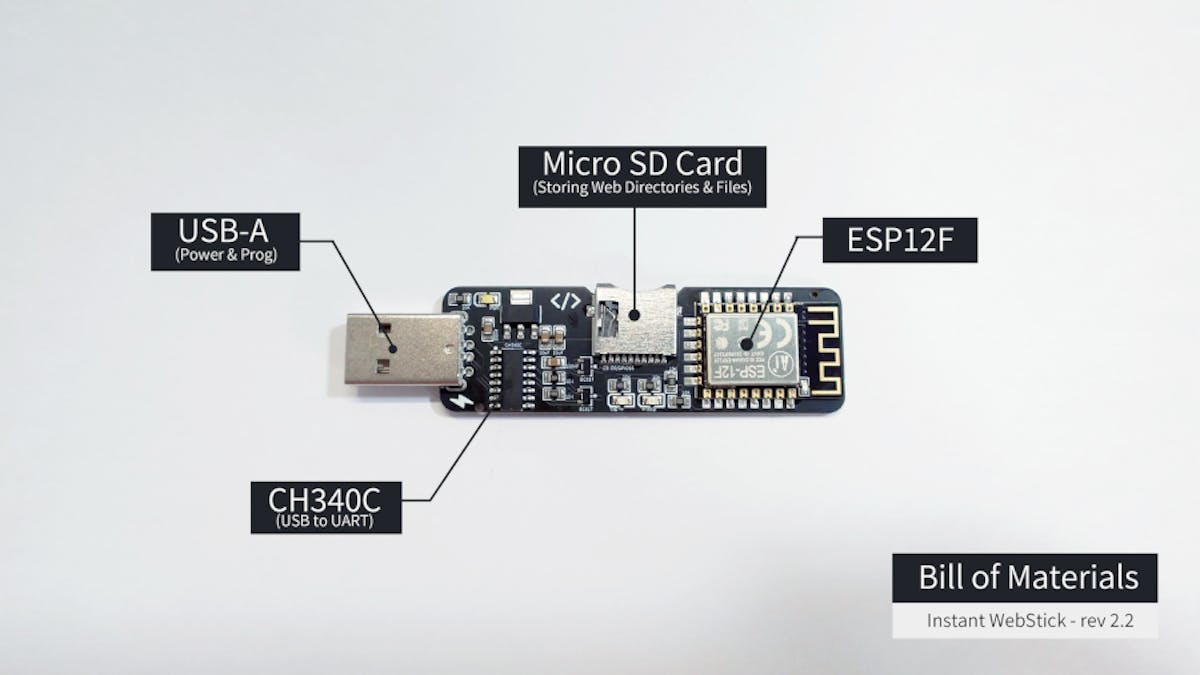The Instant WebStick Is a Tiny MicroSD-Based ESP8266 NAS for Low-Power Media Streaming and More
Drawing just 2W under load, this gumstick-style NAS gadget is powered by Espressif's ESP12F module on an open source PCB.

Full-stack developer and university student Toby Chui has built a device he calls the "Instant WebStick" — a compact gumstick-style USB gadget powered by an Espressif ESP8266 microcontroller and able to offer a compact, low-power web server or "poor man's" network attached storage (NAS) system.
"The WebStick is a USB stick form factor web server," Chui explains of his creation, "that provide limited features similar to [an] Apache/Nginx web server, including serving static HTML [HyperText Markup Language] pages with JS [JavaScript], CSS [Cascading Style Sheets] and more, directory listing, file upload/download, cookie-based login system, and file streaming (web stream-able files only, e.g. MP3/WebM)."
That feature set sounds a lot like a traditional web server or NAS box, but the Instant WebStick is built on impressively modest hardware: an Espressif ESP12F module with an ESP8266 microcontroller. Despite running from a device intended for use in embedded systems, the gadget offers usable throughput for basic tasks: 2-4 megabits per second (Mbps) for sequential reads and 400-600kbps for concurrent read/write to the on-board microSD storage, all in a 2W power envelope.
"As a full stack developer with friends in the STEM [Science, Technology, Engineering, and Mathematics] education field, many people ask me how to setup their own website for free but [are] picky about vendor lock-in or limited features," Chui explains. "That is why I developed the WebStick: so they can trying out the happiness of self-hosting (without the need to know how to use Linux and spending too much money on an Arm SBC [Single-Board Computer] like the Raspberry Pi) and let their students figure out how web server and networking works."

The hardware runs an open source web server of Chui's own creation, which includes static site serving and a fully-functional login portal, a file manager with upload and download support, music and video streaming capabilities, a photo viewer, integrated Markdown text editor, and another text editor designed for coding — allowing HTML files to be edited directly on-device.
The source code and PCB Gerbers for the project are published to Chui's Git repository under the reciprocal GNU Affero General Public License 3, while fully-assembled units are available for $19.99 from Chui's Tindie store.
Freelance journalist, technical author, hacker, tinkerer, erstwhile sysadmin. For hire: freelance@halfacree.co.uk.

